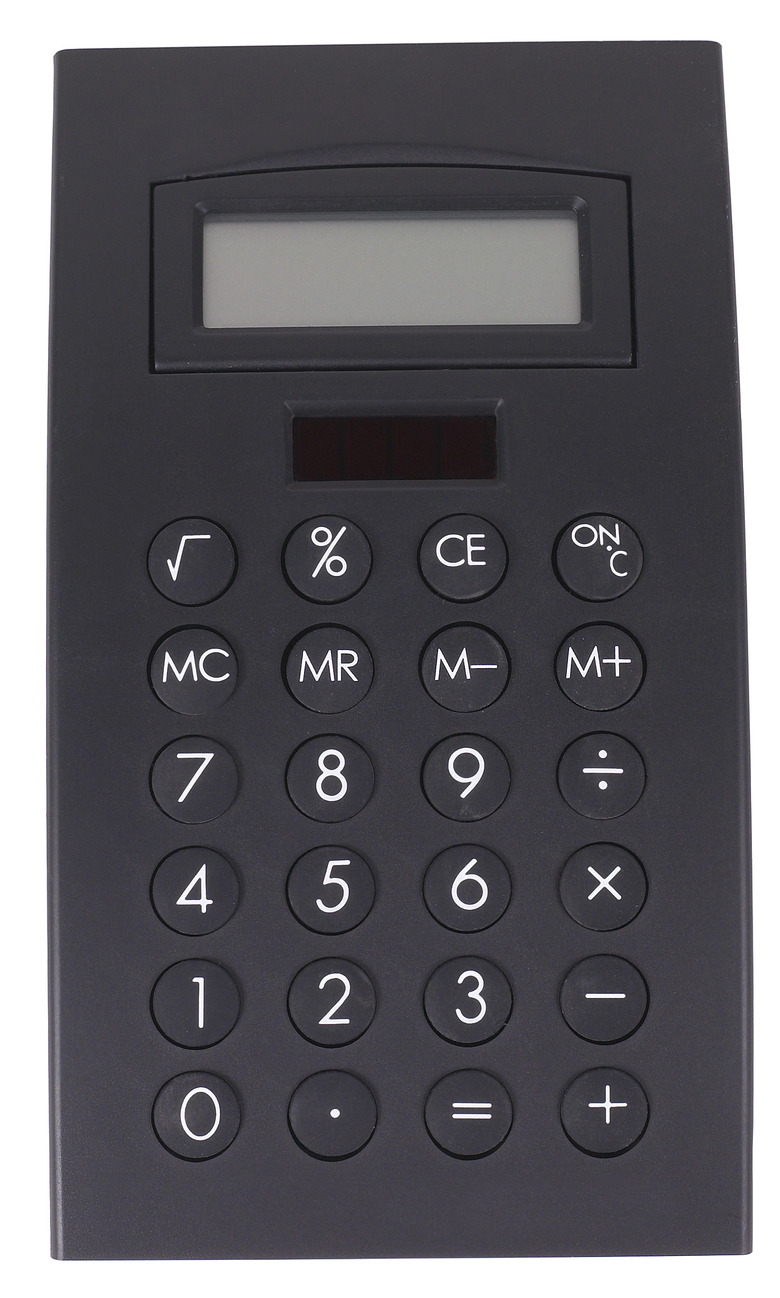Material Used In Calculator's Solar Cells
The solar cells on your calculator trap solar energy and convert it to electrical energy to power your calculator's liquid crystal display. The material in these solar cells is crystalline silicon. Silicon is a fairly common element on Earth — beach sand, for instance, is made from silicon compounds. Purifying silicon, however, is difficult and that's why it's not cheap even though it's so abundant in Earth's crust.
Doped Silicon
Doped Silicon
The silicon in your calculator's solar cells isn't pure, because it's been doped or chemically treated to add specific impurities. Doped silicon that has extra electrons is called N-type, whereas doped silicon that is missing electrons is called P-type. N-type silicon typically contains added antimony, arsenic or phosphorus, whereas P-type silicon typically contains added boron, aluminum or gallium. Treating silicon with phosphine gas or PH3 adds phosphorus to make N-type silicon, whereas diborane gas or B2H6 adds boron to make P-type silicon.
Operation
Operation
Your calculator's solar cells contain a layer of N-type silicon adjacent to a layer of P-type silicon. Some of the extra electrons in the N-type layer flow into the P-type layer, leaving each layer with a net charge. This net charge in both layers creates an electric field. When light strikes the solar cell, it dislodges an electron, upsetting the balance at the P-type N-type border. Thanks to the electric field at the border, current can flow only one way, and thus the freed electron ends up traveling around a circuit of wire in your calculator, performing work en route.
Purification
Purification
Silicon on Earth is usually found combined with oxygen, and removing the oxygen is difficult. Manufacturers generally take a mineral called quartzite and bake it in a furnace together with pure carbon. Next they react the product with chlorine to make silicon tetrachloride. Combining this with hydrogen results in impure silicon with hydrochloric acid as a byproduct. The remaining impurities are removed through a melting process called zone refining.
An alternative process zaps silane gas or SiH4 with an electric spark, yielding both silicon and hydrogen gas. This process is used to make so-called amorphous silicon which has a different structure from the crystalline form.
Considerations
Considerations
Typically the efficiency for solar cells like those in your calculator runs about 15 percent. Much of the light that strikes the cell has either too little or too much energy to dislodge electrons and create current flow. Sometimes even when the light does have the right amount of energy, the electron it dislodges recombines with a "hole" and the energy is wasted as heat. Finally, some of the light is reflected off the surface of the silicon, which is why the cells look a little shiny when you hold them at the right angle to the light.
References
- Chemical Principles, the Quest for Insight; Peter Atkins and Loretta Jones
- Georgia State University Hyperphysics: Doped Semiconductors
Cite This Article
MLA
Brennan, John. "Material Used In Calculator's Solar Cells" sciencing.com, https://www.sciencing.com/material-used-calculators-solar-cells-2339/. 24 April 2017.
APA
Brennan, John. (2017, April 24). Material Used In Calculator's Solar Cells. sciencing.com. Retrieved from https://www.sciencing.com/material-used-calculators-solar-cells-2339/
Chicago
Brennan, John. Material Used In Calculator's Solar Cells last modified March 24, 2022. https://www.sciencing.com/material-used-calculators-solar-cells-2339/
